Fix RPC server is too busy to complete this operation error
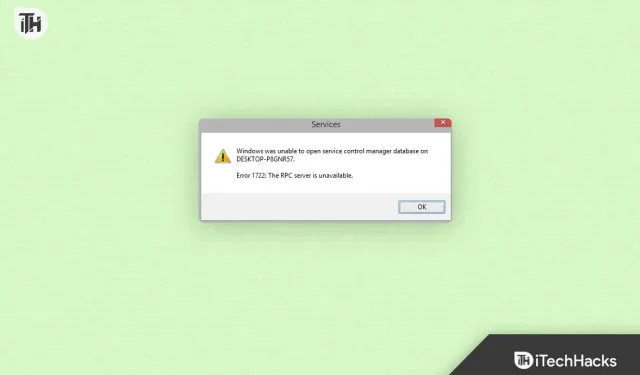
Windows users often encounter the “RPC server is too busy to complete this operation”error. When a program or process tries to access a remote system through remote procedure call (RPC), it fails because the RPC server is overloaded or unavailable.
This error can be frustrating as it prevents you from performing certain tasks or using certain programs. This troubleshooting guide discusses several solutions to resolve the “RPC Server Too Busy”error.
What is an RPC server?
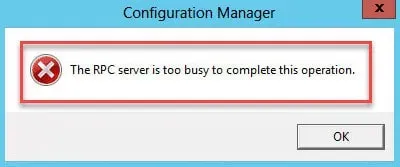
RPC is an open protocol that allows processes on different systems to exchange data. Many tasks, including file sharing, printing, and networking, are performed using RPC on the Windows operating system. On a remote system, an RPC server processes an RPC request when it is sent by a program or process.
It sends the result of the request to the requesting program or process after the request has been processed. However, this can cause various errors, including the RPC Server Too Busy error if the RPC Server goes down, which is a critical part of the Windows operating system.
What are the causes of the RPC Server is too Busy error?
The RPC server may be too busy The error occurs for a number of reasons, some of which are listed below:
- Overloaded RPC Server: This is one of the main reasons why the RPC server is too busy. Error. The remote RPC server may be overloaded with too many requests and stop responding.
- Firewall blocking RPC: Your system’s firewall may be blocking the RPC protocol, resulting in the “RPC server too busy”error. Firewalls can sometimes block legitimate traffic, including RPC requests, despite their purpose.
- Antivirus or security software: Beware of security software that interferes with the RPC protocol. This usually happens when certain types of network traffic are blocked by antivirus or security software.
- Network connection issues: This error can occur if there are network connection issues between your system and the remote system. This may be due to network congestion, faulty hardware, or network misconfiguration.
- Corrupt Windows Registry: This can cause a number of errors, for example if the RPC server is too busy. Error if the Windows registry is corrupted.
How to fix RPC Server is Too Busy 2023 error
So, here are some fixes you can use to resolve the RPC Server is too Busy error message:
Restart the RPC Service
To resolve the “RPC Server Too Busy”error, the first and easiest step is to restart the RPC service on the remote computer. To do this, follow these steps:
- First, open the Run dialog box by pressing the Windows key + R.
- To open the services console, type services.msc and press Enter.

- After that, find the Remote Procedure Call (RPC) service at the bottom of the page.
- To restart the RPC service, right-click it and select Restart.
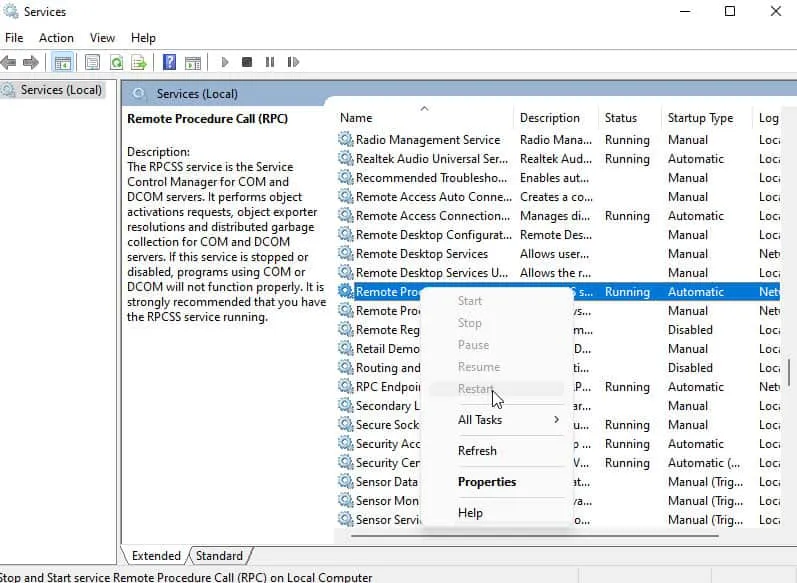
Disable Windows Firewall
The RPC server is too busy This error can be corrected if your system’s firewall is blocking the RPC protocol. If your firewall is blocking the RPC protocol, you can temporarily disable it to see if it fixes the problem. You can turn off Windows Firewall by doing the following:
- First, to open the Run dialog, press Windows + R.
- To open the control panel, type control panel and press Enter.
- Select System and Security.
- Select Windows Defender Firewall.
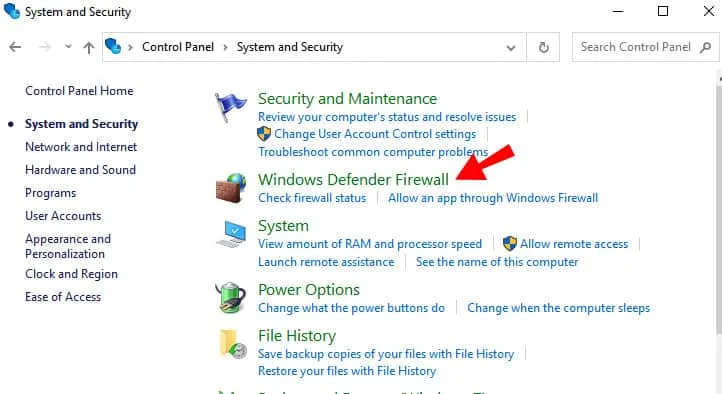
- On the left side, click Turn Windows Defender Firewall on or off.
- Select Turn off Windows Defender Firewall (not recommended) for both private and public networks.
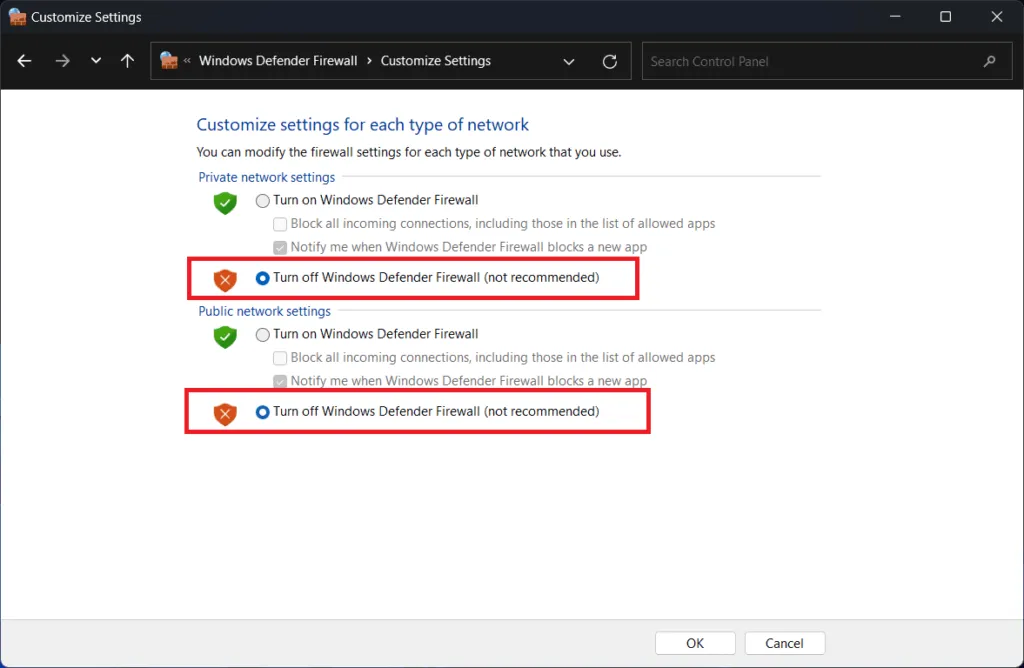
- Click OK to save your changes.
Note. Disabling Windows Firewall can leave your system vulnerable to malicious attacks. After fixing the problem with the RPC server, make sure it is enabled.
Disable antivirus or security software
You may need to temporarily disable your antivirus or security software if it interferes with the RPC protocol. Depending on the vendor, you should follow their instructions to disable your antivirus or security software.
Check your network connection
You can troubleshoot the network to fix the RPC Server Too Busy error if there is a network connection problem between your system and the remote system. You can troubleshoot network connection issues by doing the following:
- Initially, to open the Run dialog, press Windows + R.
- To open a command prompt, type cmd and press Enter.
- Type ping <remote system IP address> and press Enter.
- After a successful ping command, the remote system should respond.
- You may need to resolve network connectivity issues if the ping command fails.
Increase the RPC Timeout
If the RPC timeout is too short, an error may occur due to the server being too busy. This issue can be resolved by increasing the RPC timeout. To do this, follow these steps:
- First, open the Run dialog box by pressing the Windows key + R.
- Then, to open the Registry Editor, type regedit and press Enter.
- After that, navigate to the following registry key: HKEY_LOCAL_MACHINE\SOFTWARE\Microsoft\Rpc.
- Using the context menu, choose New > DWORD (32-bit) Value from the RPC key.
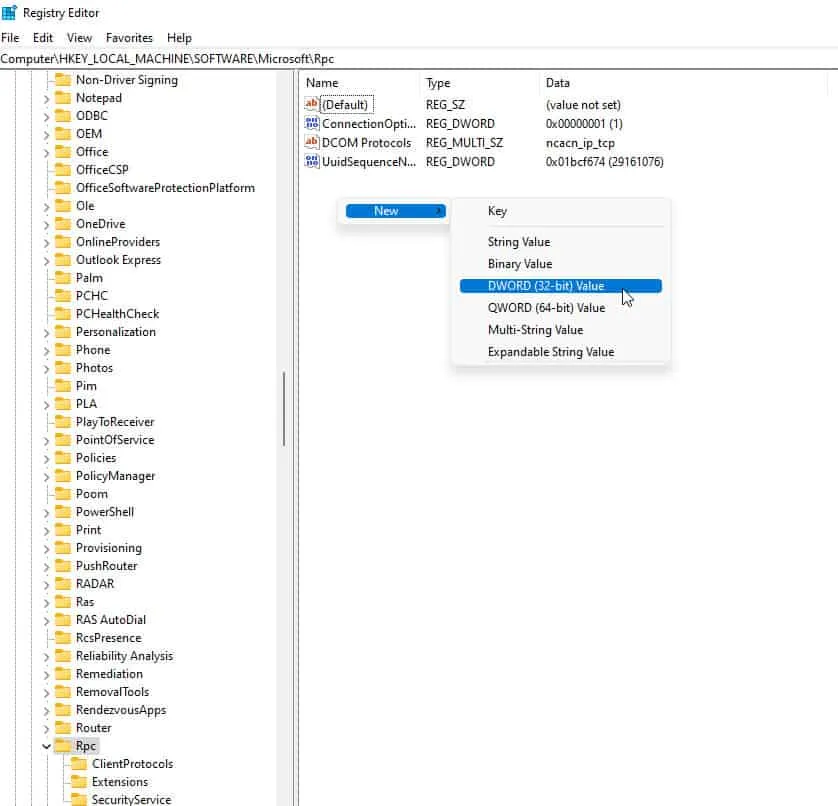
- Delete the old value and add a new one named “InternetTimeout”with value data equal to the number of seconds you want to set for the timeout limit.
- Reboot the system.
Repair Windows Registry
Errors related to the Windows registry can occur when the registry is corrupted. This may include the RPC server is too busy error. Here are the guidelines you should follow in order to repair the Windows registry:
- First, open the Run dialog box by pressing the Windows key + R.
- Type regedit and press Enter to open the Registry Editor.
- After that, locate the following registry key: HKEY_LOCAL_MACHINE\SYSTEM\CurrentControlSet\Services\RpcSs.
- To backup the registry key, right-click RpcS and select Export.
- To delete a registry key, right-click RpcS and select Delete.
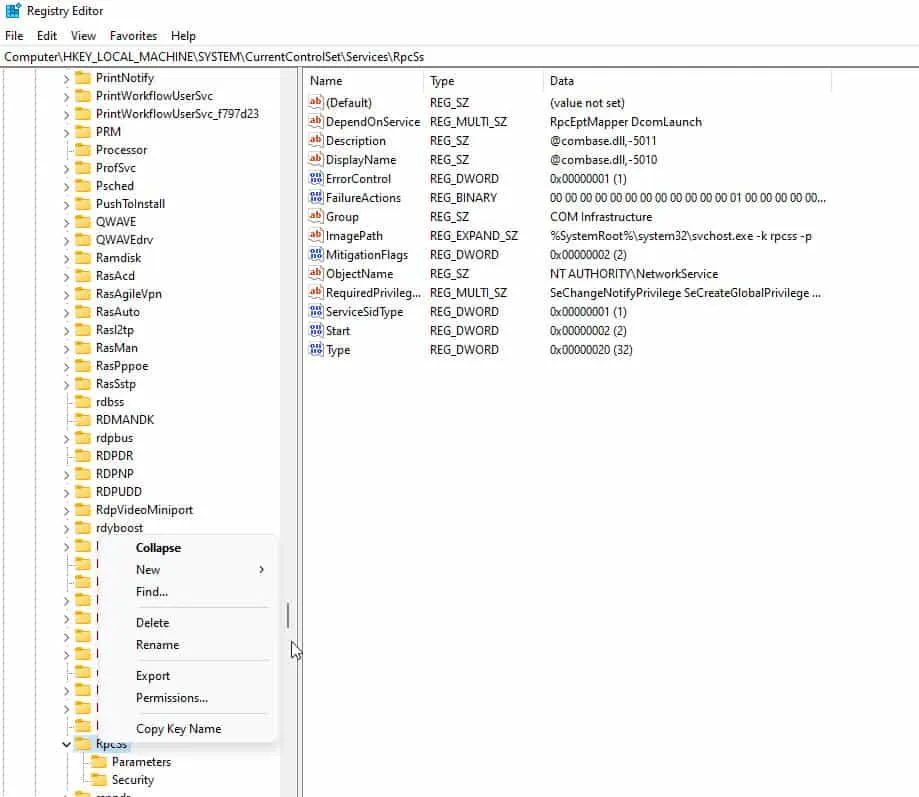
- Reboot the system.
- After that, to open the Run dialog, press Windows + R.
- In the Services console, type services.msc and press Enter.
- Now find the Remote Procedure Call (RPC) service at the bottom of the page.
- Right-click the RPC service and select Start.
Note. Incorrect editing of the Windows registry can lead to system instability. To avoid losing important information, it is recommended that you back up the registry before making any changes.
Update your system
If you don’t update your system with the latest fixes and updates, you might encounter the “RPC Server Too Busy” error. To fix this problem, you can update your system. To do this, follow these steps:
- First, open the Settings app by pressing the Windows key + I.
- Select Windows Update.
- Click Check for updates.
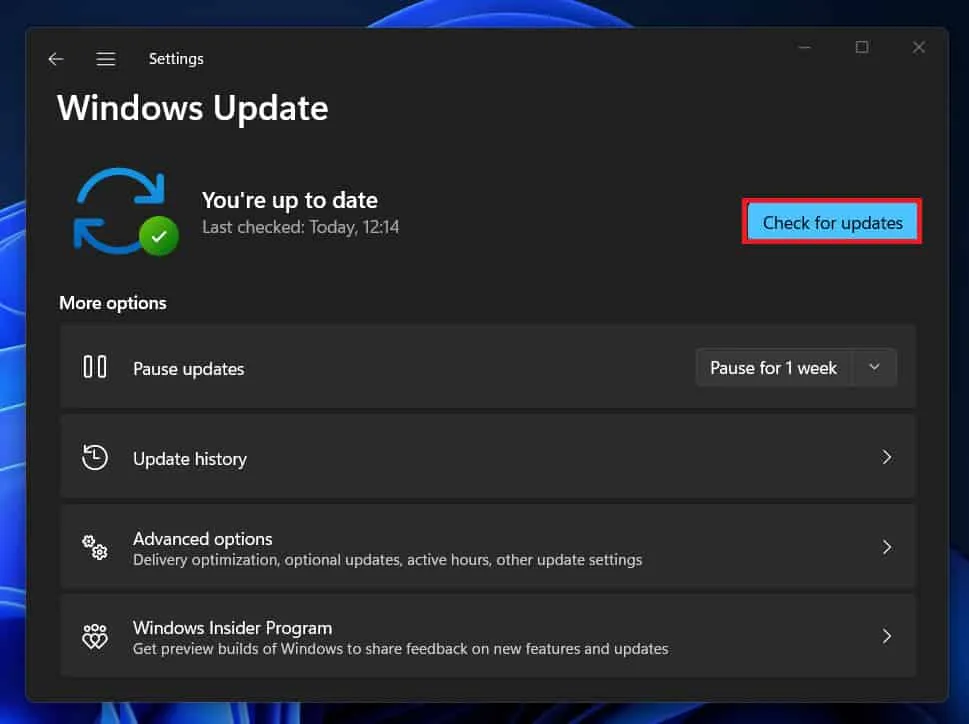
- If updates are available, click Download and Install.
Clean boot your system
This allows you to start your system with only essential services and drivers running, which is a troubleshooting technique. By doing this, you can determine if a third-party software or service is causing the RPC server is too busy error. Follow these steps to perform a clean boot:
- First, to open the Run dialog box, press the Windows key + R.
- To open System Configuration, type msconfig and press Enter.
- Select the Services tab.
- Make sure the Hide all Microsoft services check box is checked.
- Select Disable All.

- Select the “Startup”tab.
- To open Task Manager, click the “Open Task Manager”button.
- Right-click each startup item and select Disable.
- Close Task Manager.

- Click OK. Reboot the system.
Wrap
When you find that the RPC server is too busy, you will not be able to perform tasks and use certain programs. Various causes can contribute to this error, including an overloaded RPC server, firewall, antivirus software, a corrupted Windows registry, or a network connection issue.
By using these solutions, you can fix the “RPC Server Too Busy” error and keep your system running efficiently. So, here is how to fix the RPC Server is too Busy error. We hope this guide has helped you. Moreover, if you need more information, leave a comment below and let us know.
Leave a Reply